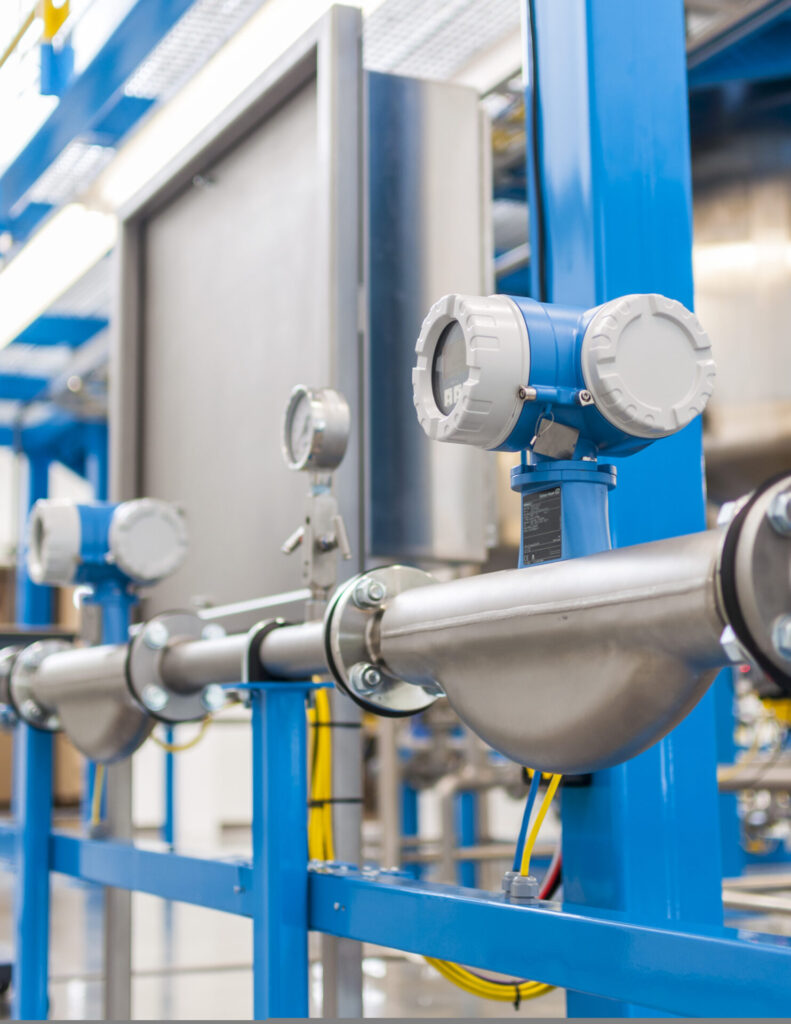Endress+Hauser highlights growing trends within the process automation industry
Discover the top 10 most viewed blogs of 2022 covering challenges and solutions across all industries May 9, 2023 – […]
Mason Flannery is a product marketing manager here at Endress+Hauser, specializing in flow measurement technologies. To help answer some frequently asked questions surrounding Coriolis flowmeters, we sat down with Mason to learn more about this technology and its various uses across industries and applications.

Coriolis flowmeters offer unparalleled accuracy, multiparameter measurement and installation ease in comparison to any other flow measurement technology. The direct mass measurement allows for maximum precision in chemical applications and life science applications where chemical reactions are based on fluid mass quantities. In the oil and gas industry, simultaneous measurement of density and mass flow allows for high precision measurement in oil barrels without using fixed density values or estimations. In the food and beverage industry, the lack of moving components, hygienic designs and multiparameter measurements make Coriolis flowmeters the ideal technology for critical installations. Coriolis flowmeters also are ideal in gas measurement because the Coriolis principle is not fluid property dependent.
One of the biggest advantages of Coriolis flowmeters is the ease of installation. A Coriolis flowmeter does not require any straight inlet or outlet runs of pipe to measure accurately. This is because the meter is making a direct mass measurement of the fluid in the tubes and doesn’t need a uniform flow profile for accurate performance. The only other consideration is the installation orientation and location based on the process. In a liquid application, you want to ensure the meter remains full of liquid and cannot get gas bubbles trapped in the tubes. You will want to avoid installing in the highest point in a liquid pipeline, or in a down flowing pipe into a large vessel or tank. In a gas application, you want to install horizontal with the tubes pointed up, or in a vertical pipe run to ensure any moisture droplets will not settle in the tubes. Other than that, you can install a Coriolis meter pretty much anywhere you can fit it in your process.
Coriolis flowmeters have a minimum and maximum fluid velocity range in which they measure with full accuracy. Typically, this is between 3 ft/s and 33 ft/s. Most Coriolis sensors, however, create a pressure drop due to the reduction from nominal pipe diameter to the inner tube diameters. Therefore, the higher the flowing velocity, typically the larger the pressure drop created. To size a Coriolis meter properly, you want to select a meter that will give you maximum performance, while minimizing pressure drop to an acceptable amount. It is not always recommended to match pipe size with meter size, as your flow velocity could not be high enough to ensure full accuracy. Endress+Hauser offers an online Applicator program free-of-charge on our website to assist customers with sizing Coriolis meters, as well as dedicated Application Engineers to consult with on challenging applications.
Coriolis flowmeters have no maintenance requirements. Thanks to the lack of moving parts, robust meter design and onboard diagnostics, there is no regular maintenance operators are required to perform. However, in certain applications or industries, there may be additional maintenance checks, calibrations, verifications or other requirements to meet regulatory compliance, contract requirements or quality standards. Occasionally, in very harsh or unsanitary services, the meters may need cleaning or monitoring to ensure quality of measurement. Endress+Hauser Application Engineers can help you determine the proper verification, cleaning, maintenance or calibration requirements for your specific applications and industry.
Discover the top 10 most viewed blogs of 2022 covering challenges and solutions across all industries May 9, 2023 – […]
When it comes to finding the right level technology for the specific needs within your industry, it can be a […]
Greg Pryor is the Temperature Product Marketing Manager at Endress+Hauser USA. To help answer some questions surrounding temperature transmitters, we […]